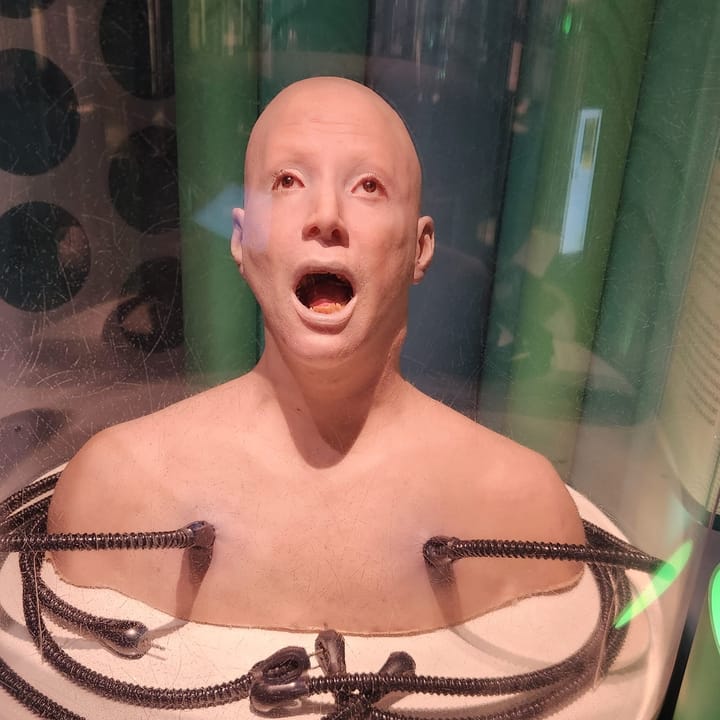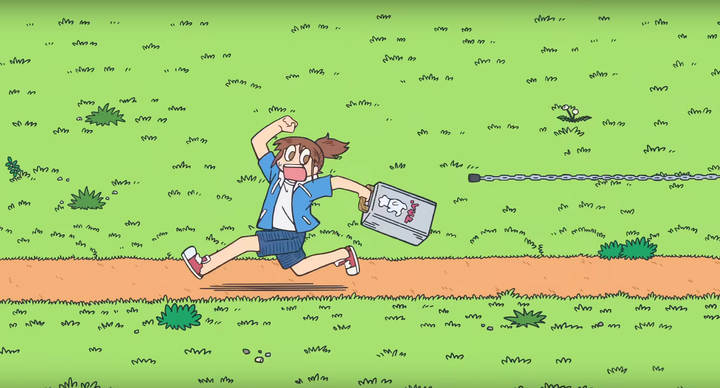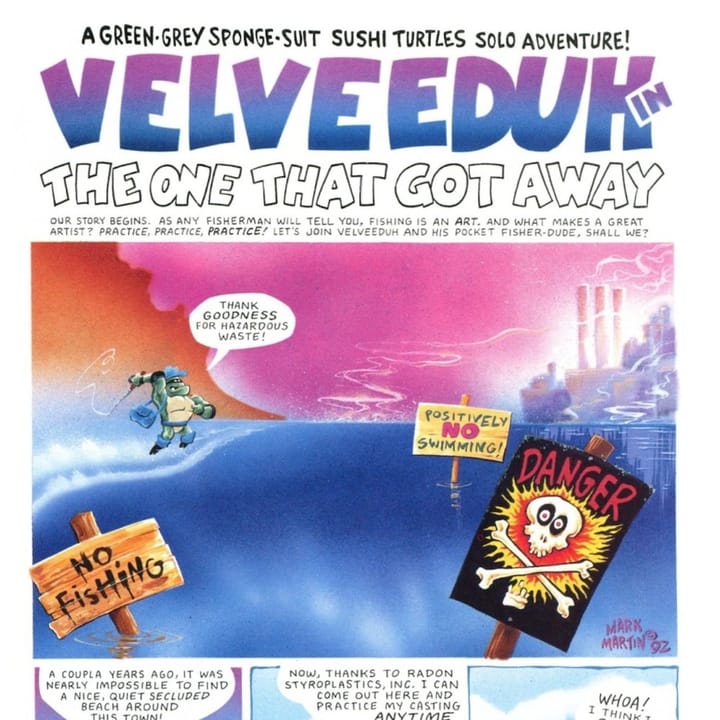Dude, Where's My Update? #11
Some new thoughts on Neon Ichiban and some old ones on the turtles.
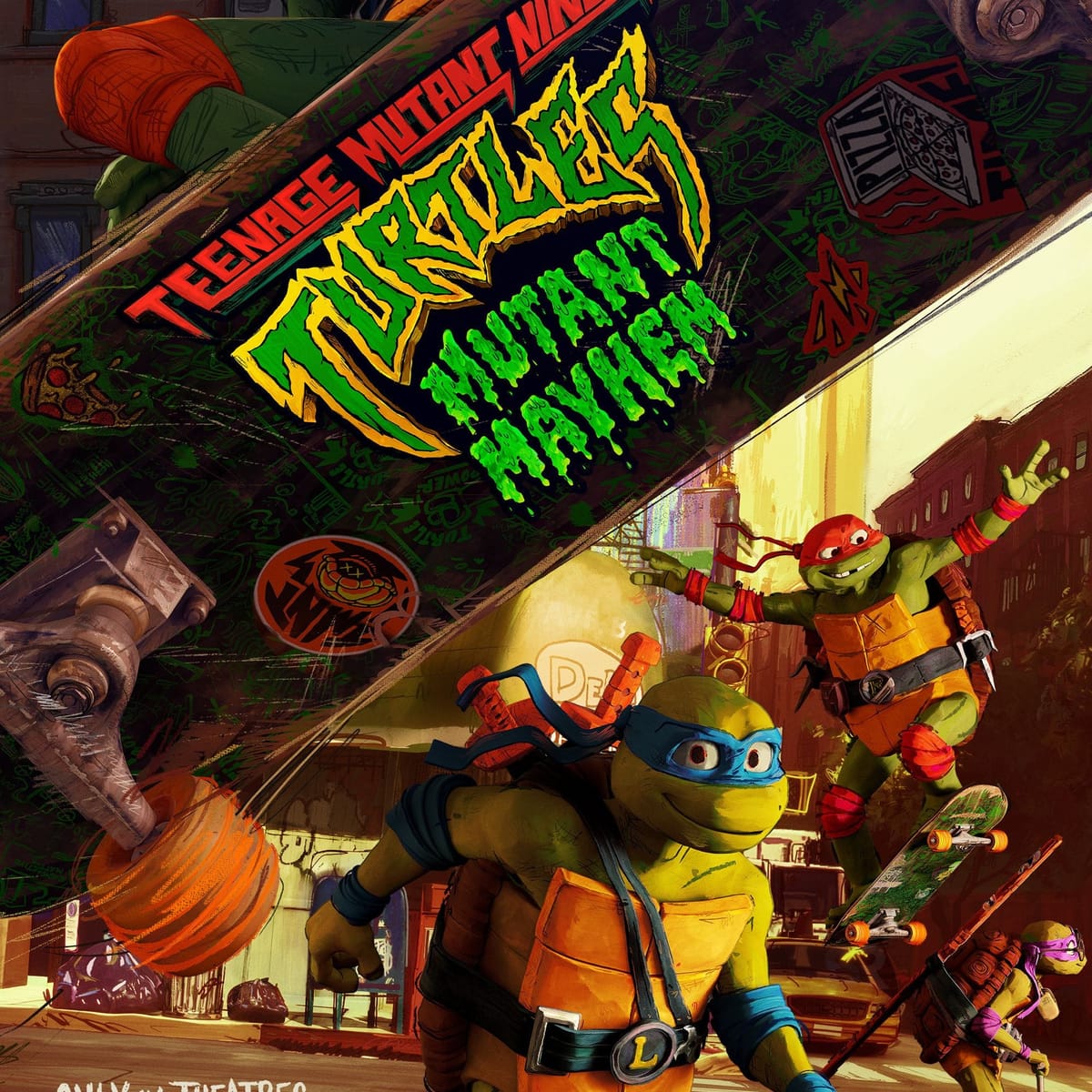
One of the greatest bugbears of the digital age, for me, is the erosion of personal ownership of cultural artifacts and tools. For a while, it looked as if digital goods were moving towards freer and more open access. iTunes, for all its myriad flaws, was a bastion of legal music that, once acquired, was yours to do with as you pleased (mostly.) News articles celebrated eBooks without DRM and personal DVDs were easily ripped so one didn’t need to keep swapping out discs to watch their collection.
Now, everything we watch, read, listen to, use even, is micromanaged, temporary, tenuous, and expensive as hell. We live in a time of double-speak and dishonesty. Purchases aren’t purchases, they’re “indefinite licenses.” Fair use is strangled for the small and tacitly condoned for the large and powerful. Subscriptions recreates the rentier class and enables a perpetual serfdom in our digital, and physical, lives. Anyone who needs an Adobe product for their livelihood can attest to this. We’re subject to Terms and Conditions arcane and onerous and fleeting, shifting beneath us at the whims of companies that act more and more like monarchies every day.
I could go on. The problems are numerous and solutions are scant. Still, that hasn’t stopped people from trying to change the game and make me eat my words. Will they succeed? I sure as hell hope so.
What got me thinking about this whole deal was a recent Humble Bundle. Tiny Onion, James Tynion’s comics? production? publishing? company, launched a bundle of his creator-owned works from across the many publishers he’s worked for. There were the familiar names: Image, BOOM!, Dark Horse, but there were also a couple books from DC and DSTLRY. I thought, wow, James must have a lot of clout if he got DC to allow “The Nice House on the Lake” to be downloadable.
Sadly, this was a case of missing the fine print (that may or may not have been there, early into the bundle’s lifecycle was I.) Instead of giving me control of where and how I can read these books, like most of the rest, I was given a code I can’t use (yet) for Neon Ichiban, the new digital comics store from former ComiXology alums Mosher and Steinberger aka the DSTLRY team.
Huh.
Neon Ichiban is just one of a few new digital storefronts that are cropping up in the wake of ComiXology’s spectacular collapse a couple years back. In some ways, this Neon Ichiban is rising from their ashes while Sweet Shop is rising from the grave of the (gone too soon) Omnibus. GlobalComix has quietly been doing great work and, of course, Humble Bundles are the best damn deal around, even if some publishers make me read their books on freaking Kobo or Bookwalker.
I’ll be honest though: I kinda wish NI wasn’t popping up just yet because I’m afraid it’s going to eat Sweet Shop’s lunch and we’ll be right back where we started with one behemoth. They’ve got the people, the name, the cache. It’s not an unfounded fear.
That, really, is why I want the ability to have DRM-free downloads of my books: it promotes competition and a healthy digital ecosystem. It encourages the development of novel features and platform improvements, something Amazon decided wasn’t necessary after a year or two of owning ComiXology. I’m not afraid my library will be split. I can take advantage of deals in multiple places without being locked into a subpar reading experience. and I know that if the shop goes poof in the night or their servers crash, I still have my damn books.
Sure, I like customizing my library. I like having a reader that I know works and knowing I can swap it without having to repurchase the books. I like that I don’t need constant access to the internet. But I don’t need to use that if the places I’m buying these books from are great to use and aren’t keeping me locked in.
I’ve been a digital comics reader for the vast majority of my life. ComiXology is where my collection lives (trapped) and I’ve really wanted a new place to read digital comics so I don’t have to set aside an entire room for longboxes but I refuse to purchase anything that’s not DRM-free (even though I’ve gotten got a couple times.) As a librarian, it is also of particular interest because if they can get a system working, maybe they can build one that’s library friendly and we can start building a real-ass digital collection that isn’t constrained by $60-per-book-for-2-years licenses or an ongoing subscription cost.
For those who want a bit of a deeper dive, check out The Beat’s write-up on Neon Ichiban and their write-up on Sweet Shop. I’ll be keeping an eye on them as they launch and will report back as I get familiar with them.
Oh, and if anyone at Sweet Shop or Neon Ichiban is reading this, here are a few features I’d love:
- Custom reading lists that I create.
- Corollary: reading by storyline for superhero comics.
- The return of real-ass, comics-focused metadata (letterer, colorist, cover artist, etc.)
- Variant covers! Do I hate the variant boom? Kinda! Would I mind paying a little extra for the special cover from an artist I love? Sigh. No…
- The ability to gift my copy of a comic to another user (permanently) or loan it out (temporarily.) NI is already doing a secondary market thing with the caveat of “download a PDF of the book, lose access to selling it for money,” which so far seems like a fair trade-off, so this could grow out of that system.
- The ability to SORT A DAMN SERIES BY MOST RECENT DC INFINITE.
- SD-card storage. Please. My tablet can only handle so many megabytes.
- Pie-in-the-sky: using the app as a reader for my locally stored comics.
And here’s an idea for the DRM-free reluctant publishers:
Keep DRM on the comics for a maximum of 1 year old (I’d prefer 6 months but this seems fair for ones that don’t want it available from the get-go.) Hear me out.
DRM is ostensibly a way to prevent piracy, which is bad because it takes money away from creators (and their publishers.) When a comic first comes out, that serves a real purpose because demand is high and piracy often fills in gaps for a wide variety of reasons, some legitimate, some bullshit. Past a certain point, however, restricting ownership via DRM is purely self-serving on the part of the publisher, an exercise in control, and generates more second-order ills than first-order gains.
It prevents archival work, it effectively locks readers into platforms that may or may not be serving their needs anymore, it degrades the reading experience, and generates ill-will in the community. It also depresses readership, though I will readily concede that, for most people, saying a book is DRM-free does little to change a conscious purchasing choice.
I’m not a hard-liner. I believe in suitable compromises so that artists can feel secure that piracy won’t eat their lunch, publishers can make enough of a profit to balance out losses and take risks, and readers can still enjoy the benefits and freedoms of owning a copy of a work. With this compromise, popular titles have a bulwark against unauthorized distribution during their most lucrative periods by making it harder to get copies out while still keeping legal access easy and at the same time encouraging ownership in the long run. Just a thought.
What am I working on?
“So You Want To Read TMNT?” returns! Wednesday launches Part 1 and below you can find the original prologue I wrote for the series of articles. I’ll be releasing the next few parts week by week with, hopefully, a second post for those who’ve already read them. That said! If you have, please give them another read. They’re completely remade with new stuff. Plus it’s been two years.
Anything else? You’ll have to wait and see to find out.
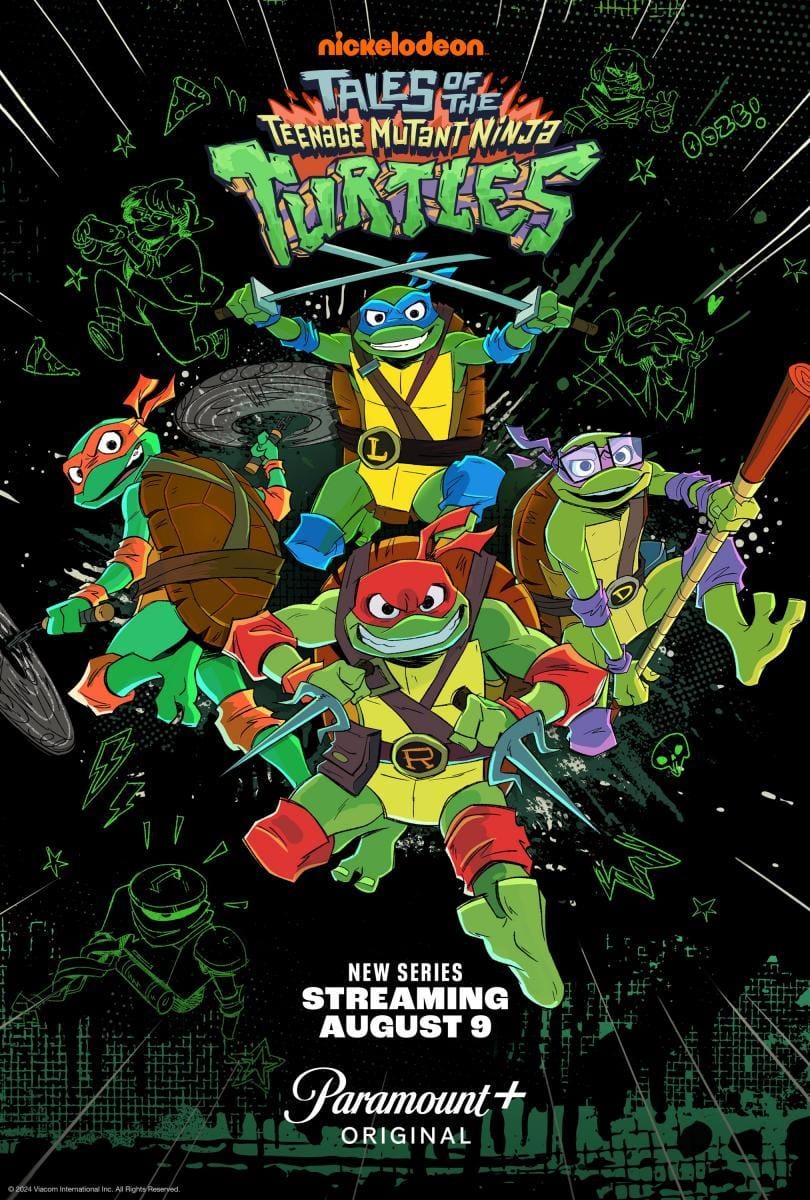
Prologue
Originally published on 8/7/2023 at Multiversity Comics. Updates noted throughout article.
Picture this. You, or your kid, or your parent, or your friend, has just watched Teenage Mutant Ninja Turtles: Mutant Mayhem. You’re jazzed. You’re looking for more. Maybe you go find the other movie, maybe the other TV shows, or maybe, and that’s why you’re here, you want to read the comics they’re based on. To do that, you need a reading order because there’s nothing that goes together better than reading orders and comics.
Except maybe pizza and cowabunga.
But where do you start? That’s a surprisingly tricky question with a tricky answer. There are a lot of “Teenage Mutant Ninja Turtles” series, some intertwined, some not. Looking to read every issue? Or just the “Mirage Continuity” ones? What about the current ongoing series from IDW? Do you start with “Teenage Mutant Ninja Turtles: Reborn” or jump back to the start?
Then there’s the appropriateness of the content. Contrary to what the 80s would have you believe, the comics run the gamut of ratings. Are you looking for family-friendly? Read “TMNT Adventures.” Something with a little more edge but still fine for 13 year olds? IDW’s relaunch. Way more edge than that? Volume 3 aka the “Urban Legends.”
Finally, and most crucially, there’s the accessibility of these books. Do you find the single issues? Or maybe trades or omnibi? What about digital access?
And I’m sure you’re wondering by now: Elias, what in Splinter’s name are you doing writing another “TMNT” comic reading order? They already exist! In droves! Here’s one from Comic Book Herald. And another from TMNT Entity (more on this one later. For good and for ill.) And yet another from the TMNT Wiki. And, you guessed it, another from reddit’s TMNT Wiki (who knows how long this one will be around.) And one more for good measure from How to Love Comics.
You’re right. This is a silly exercise. For most use-cases, those other reading orders are wonderful. And yet, here I am, writing this column. Why? Because when I decided to educate myself on all things teenage, mutant, ninja, and turtle a couple years ago, I ran into an issue.
Specifically, I ran into a lack of issues.
No matter where I looked, or what list I checked, I could not find a complete (and correct) list that answered the questions above, most specifically where to find the dang things. As a completionist at heart, this was a great disappointment to discover. You’d think that for a franchise as popular as “TMNT,” all the comics would be in perpetual print, collected era by era, series by series. Maybe even in some kind of “complete collection.”
That would be wishful thinking.
A (Brief) History
See, “TMNT” has had a varied and strange publishing life. It began as a self-published black and white parody of Frank Miller comics co-written and co-drawn by two guys, Peter Laird and Kevin Eastman. Once it blew up, the comic (now multi-media property) became the lynchpin of Mirage Comics, their publishing company, with one-shots and short stories and supplemental series. Soon, those comics were being drawn and written by a cavalcade of talent that sometimes, but not always, included the original two creators. A brief list of notable highlights or consistent creators includes: Michael Dooney, Jim Lawson, Dave Sim, Rick Veitch, Steve Bissette, Ryan Brown, and Eric Talbot. The issues remained in B&W in the singles but most got colored and collected as well.
We’ll come back to why these two points are important in a minute.
Eventually the first volume ended, was renumbered, then ended again a short while later. Alongside that was the family-friendly color version based on the cartoon published by Archie comics, a couple short lived spin-offs, and a syndicated newspaper strip, though not from Archie Comics. They, too, ended. Things then moved over to Image comics, where everyone took a turn for the gritted teeth and shock plot swerves and unceremoniously crashed and burned before ever finishing its story.
There’s also a short chapter where Dreamwave publishing got the rights to adapt the 2003 edition of the cartoon. Don’t worry about that one.
At the turn of the millennium, Mirage took the title back in earnest, and launched volume 4, this time without co-creator Eastman (as he sold his stake in the venture to Laird.) Added wrinkle: this is technically volume 3 since it ignores everything that Image did. Eventually, Viacom purchases the whole venture (TMNT, not Mirage) from Laird and while he was allowed to keep publishing volume 4 under Mirage Comics, only three more issues came out after the sale and thus Volume 4 is still, technically, ongoing.
This brings us to present day, where IDW has been publishing their own continuity of stories, complete with spin-offs. They also colored and re-released volume 3 from Image under a new name - Urban Legends - and finally completed the series. And published adaptations of each new cartoon iteration, of course. Gotta keep the synergy machine running.
Back to My Conundrum
Because of the many companies, many eras, and many disparate titles, there isn’t just one set of trades and no easy chronology within, or across, each iteration. That’s par for the course on “Daredevil” or “Batman” but for an indie title of this prominence, it’s quite the rarity. And then there’re the two added wrinkles that make any complete read-through a real bear of a time.
Remember how I mentioned that in the original run of comics they had a variety of creators working on the book, later to be called “The Guest Era?” And that they collected the black & white stories in both B&W and in color? These factors meant that when IDW put out new trades, they had decisions to make and constraints to adhere to. The solution? Kinda, sorta group issues by creator instead of sequentially and then also by their printing status: original B&W or recolored (be the colors brand new or from the first trades.)
This led to three or four different but similarly named lines existing and a doubling or tripling up of certain issues while skipping others. Additionally, a number of those original issues have never been reprinted or collected at all, notably the Rick Veitch written ones, and while there are B&W and color versions of the Eastman & Laird led issues, we only have the color versions available for most of the rest (as of writing.)
For the vast majority of people, that second part is probably not an issue. Who cares as long as you can read it? It is, however, frustrating for someone like me who wants to have a consistent reading experience and has been burned by colored black & white comics before. It also royally pisses off the preservationist in me since it means those comics, which were conceived of and drawn for black & white, may be lost forever in their original form if they aren’t properly preserved.
The rights issues are a pain but at least they are understandable. Veitch didn’t want to give up ownership when Viacom (now Paramount) decided that buying creators out instead of sharing royalties was the simple solution, thereby changing the deal he had with Mirage; Sim actually owns Cerberus; and any other crossovers are the purview of other publishers/creators. Still, it sucks as a modern-day reader and double sucks for the comprehensive one.
To find the goldilocks of “TMNT” reading orders is a fool’s errand. There never will be one. Something will always have to give. But by the ooze, I’m gonna try my hardest to make one that connects readers to the issues as easily and comprehensively as possible, no matter how you like to read. To be a sign-post pointing the way. And to maybe have a little fun in the sewers of NYC and the streets of Westchester. No spreadsheet wizardry required.
Goongala!
